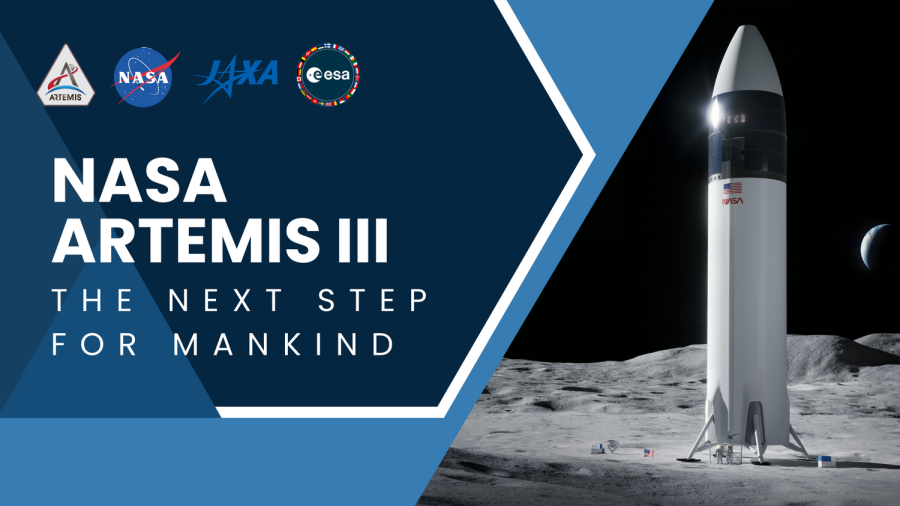NASA Artemis III: A new era for the moon, space exploration, and beyond
With Artemis III, NASA plans to set foot on the moon in 2025.
With the Artemis program, NASA prepares to land the first astronauts on the Moon since the Apollo program in 1972, planning to establish a long-term lunar presence on the South Pole.
“Returning to the Moon is an extremely important objective scientifically as well as even from a humanitarian standpoint,” said Earth and Space Science teacher Philip Becker.
The lunar South Pole contains many minerals and importantly, ice, which will be used to create water, air, and fuel. The journey is composed of multiple initiatives, including the Orion Spacecraft, Gateway Space Station, Human Landing System, and Artemis Base Camp.
“With more demand for access to the Moon, we are developing the technologies to achieve an unprecedented human and robotic presence 240,000 miles from home,” said NASA Associate Administrator Kathy Lueders.
To help develop these advanced technologies, NASA is collaborating with other space agencies from different countries around the world, such as the ESA, JAXA, and the CSA. In addition, they are currently working with private companies such as SpaceX for the first commercial space logistics deliveries
“I think cooperation is a phenomenal idea, as space is hugely vast. Russian cosmonauts were able to shake hands with American astronauts in the docking port of [the Apollo-Soyuz] mission. And that was an amazingly exciting time,” said Becker.
As astronauts return to the Moon for the first time in over fifty years, the exciting future of space exploration looms large. While Artemis III may stop at the Moon, later missions could one day reach Mars or beyond.
“I think it’ll be very important, because as we close in on the future and we destroy the Earth with issues such as climate change, we need more space,” said Ethan King (‘25).
The gusto behind Artemis III resembles the original Apollo program, but the similarities go even further back. In 1865, science fiction writer Jules Verne published From the Earth to the Moon, showing that humanity has always yearned to explore the cosmos.
“By taking on this mission, it will help us expedite the technologies that will allow us to not only live safely on the Moon, but prospectively to live beyond that to other planets, like Mars,” said Becker.
Your donation will support the student journalists in the AVJournalism program. Your contribution will allow us to purchase equipment and cover our annual website hosting costs.

